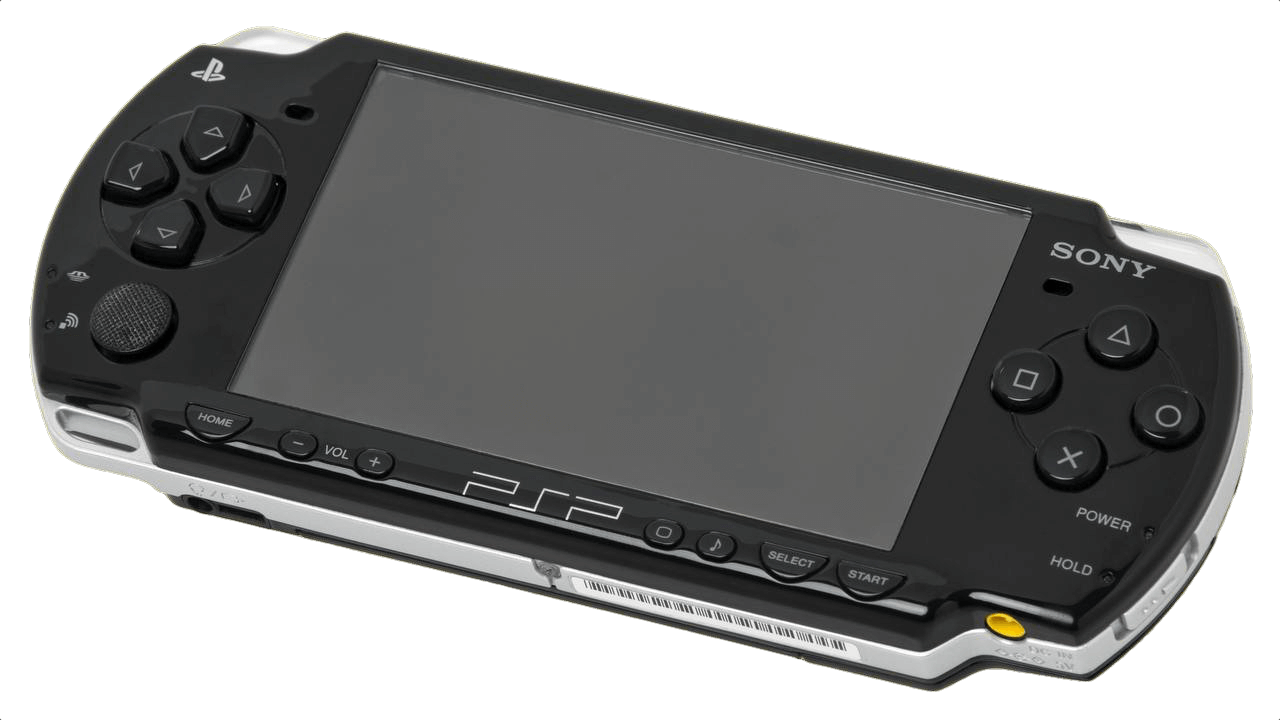
The PlayStation Portable (PSP), released in 2004 in Japan and 2005 globally, marked Sony’s first entry into the handheld console market. Unlike Nintendo’s traditionally modest handhelds, the PSP was a powerhouse designed to deliver console-quality gaming on the go. With a large, high-resolution widescreen display, powerful 3D graphics capabilities, and multimedia features including music, video, and internet browsing, the PSP aimed to be a full entertainment device. Sony introduced the Universal Media Disc (UMD) as its primary game and movie format, enabling large-capacity games and cinematic experiences never before seen on handhelds.
The PSP launched with a strong lineup and continued to amass an impressive library over time. Standout titles included God of War: Chains of Olympus, Crisis Core: Final Fantasy VII, Monster Hunter Freedom Unite, Daxter, Lumines, and Persona 3 Portable. It also featured robust media functionality, letting users store and play videos, music, and photos—making it a versatile all-in-one portable device. With built-in Wi-Fi, players could access the internet and play select games online, and Sony introduced features like Remote Play with the PS3 and digital downloads through the PlayStation Store.
The PSP sold over 80 million units worldwide, making it one of the most successful non-Nintendo handhelds of all time. While it never overtook the Nintendo DS in sales, the PSP carved out a strong legacy as a sleek, multimedia-rich portable system that appealed to an older gaming audience. Its influence lives on in modern mobile gaming and in Sony’s own handheld follow-up, the PlayStation Vita. For many, the PSP was ahead of its time—pushing boundaries for what a handheld console could be.
PlayStation Portable (PSP) Technical Specifications
| Component | Specification |
|---|---|
| CPU | MIPS R4000-based CPU @ 1–333 MHz (clock-scalable) |
| GPU | Custom 166 MHz GPU, 3D graphics with hardware transform and lighting |
| Display | 4.3” TFT LCD, 480×272 resolution, 16.77 million colors |
| Sound | Stereo speakers, 3D sound processing, microphone (on later models) |
| Media | UMD (Universal Media Disc), Memory Stick Duo for storage |
| Storage | Internal memory: 32MB (original), 64MB (Slim and later) |
| Wireless | Wi-Fi 802.11b, USB 2.0, infrared (original model) |
| Battery Life | 4–6 hours (gameplay), 4–5 hours (video playback) |
| Release Date | 2004 (Japan), 2005 (North America and Europe) |